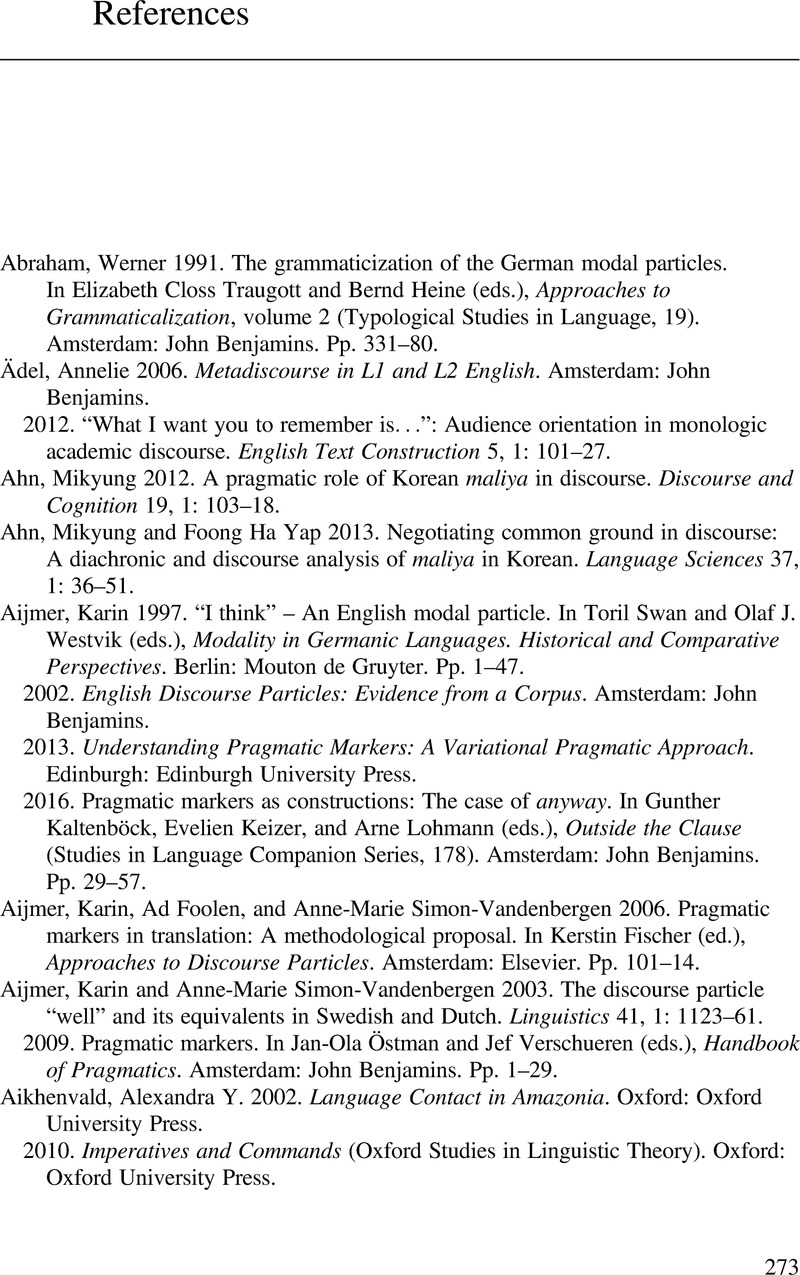Book contents
- The Rise of Discourse Markers
- The Rise of Discourse Markers
- Copyright page
- Dedication
- Contents
- Tables
- Preface
- Abbreviations
- 1 The Development of Discourse Markers
- 2 Concepts of Analysis
- 3 English Discourse Markers
- 4 French Discourse Markers
- 5 Japanese Discourse Markers
- 6 Korean Discourse Markers
- 7 Discourse Markers in Language Contact
- 8 Discussion
- 9 Conclusions
- References
- Language Index
- Author Index
- Subject Index
- References
References
Published online by Cambridge University Press: 11 June 2021
- The Rise of Discourse Markers
- The Rise of Discourse Markers
- Copyright page
- Dedication
- Contents
- Tables
- Preface
- Abbreviations
- 1 The Development of Discourse Markers
- 2 Concepts of Analysis
- 3 English Discourse Markers
- 4 French Discourse Markers
- 5 Japanese Discourse Markers
- 6 Korean Discourse Markers
- 7 Discourse Markers in Language Contact
- 8 Discussion
- 9 Conclusions
- References
- Language Index
- Author Index
- Subject Index
- References
Summary

- Type
- Chapter
- Information
- The Rise of Discourse Markers , pp. 273 - 298Publisher: Cambridge University PressPrint publication year: 2021



